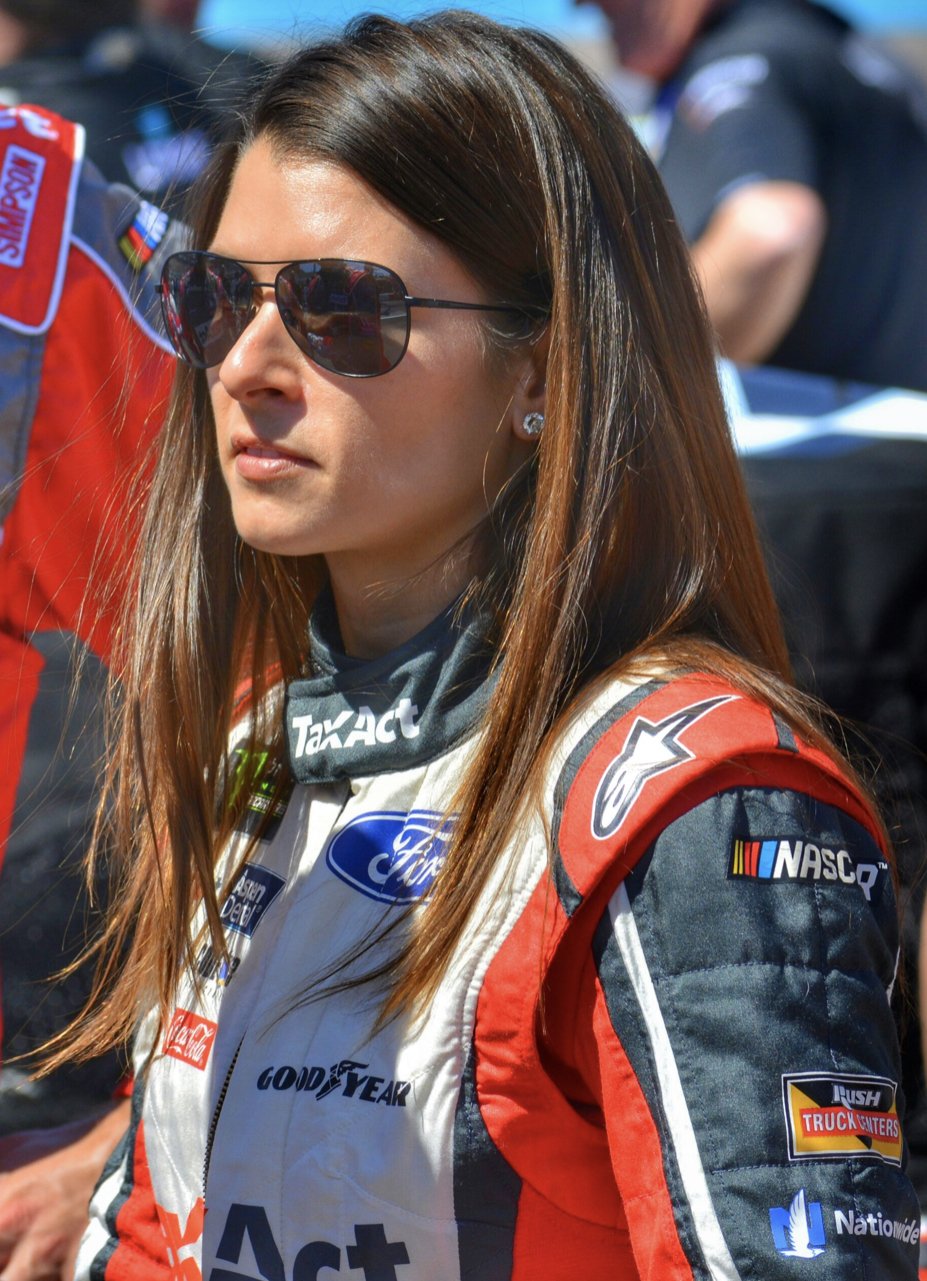‘At the end of the day, the nature of sport is Masculine’ - Women and F1
Hope - @hxpexo
On Sky Sports’ Child Streaming of the F1 Danica Patrick, American racing driver, stood next to a young female reporter who was interviewing her and described racing as a masculine sport. Patrick described the drivers as needing a different mindset, one that is ‘not normal in a female mind’ in order tobe aggressive on track and fight for positions.
As a successful female driver within such a male dominated sport there has been some discourse surrounding these comments. Some fans believe this is a valid perspective, especially as Patrick did note the imbalance of men at the forefront of the sport in comparison to the lack of women seen, as well as the fact she is a successful female driver who will have a nuanced experience and argued it is wrong to invalidate her point of view and experience of the sport. Despite this, there are others who believe this comment is damaging to the feminist movement in the sport, especially saying such things on the Juniors broadcasting episode. Fans argued that this can be discouraging to young girls to hear as well as making the aggressive nature of the sport unfeminine and negative. In fact, in recent days, as the clip has gained more attention more criticism than support has been thrown Patrick’s way.
The young presenter, Scarlett, had prior to this statement been sharing her feelings on the underrepresentation of women in motorsport. Unfortunately, as the only other female presenter Patrick seemed to speak for all women in her response to the reporter’s question. Though she is not the only female commentator and contributor on the Sky F1 broadcast, at the time of the interview she was the only one there who could really speak on such a topic. Her place in the Sky broadcasting team has been questioned by fans who, in addition to their criticism of the statement, are pointing out the Danica has some other interesting takes; conspiracy theories on aliens and giving a platform to right wing voices.
Whilst it can be said these traits of aggression and competition are vital in the world’s highest calibre of motor racing, the issue comes when these traits are given a gender. Stereotypically yes, men are more aggressive, however I know that many women would absolutely contest to this. Many fierce female athletes have to be competitive and can be as cut throat as their male counter parts.
Sexism and lack of female representation is clear in F1 and even lower leagues. This reaches down from the drivers to women who are often not encouraged into stem subjects so failing to reach engineer roles, to the pit crews who rarely have female members of the team. Comments to ESPN on their survey of how many women were in their teams showed the teams quietly embarrassed by their clear lack of female representation in their team, from Mercedes have the most female personnel in their team at 20%, down to the three teams who refused to comment and Alpha Tauri admitting to only having female workers in the factory seemingly embarrassed about the lack of representation.
It can even be seen with much of the treatment of the fan base, as a female fan I am often asked if I am only a fan of the sport because of the attractive male drivers. This is a comment even inferred by Christian Horner, saying young girls follow the sport for great looking drivers. Of course, when you think about this it is an ironic accusation that I would spend hours of my life watching drivers go round in cars that go so fast you can hardly see them, as well as in helmets that cover their faces. This is an outdated idea, similar to attitudes of the 70s with James Hunt as a playboy racer, along with the use of grid girls to make the drivers more glamorously masculine.
As well as this, many women are also often assumed to have only developed an interest in the sport due to the reality show Drive to Survive. Whilst this may be the case for some fans, which is still entirely valid as it still results in the fans watching the race day, it is wrongfully assumed that these new fans are only girls who have developed a similar obsession to the show the way we would watch Keeping Up with the Kardashians. This often results in extra scrutiny for female fans, if they can’t tell you who came ninth in the 2001 Spa GP then they are fake fans. They don’t know enough about the sport and once again their interest is invalidated, whilst the same level of knowledge is not expected of the men.
This was perfectly demonstrated by the drama involving the popular podcasters the Pit Stop Boys. The boys were involved in a podcast with some of the f2 racers in which they demonstrated their lack of knowledge regarding f2, not even knowing who one of the racing drivers was. Though the niche of some of the boys’ podcasts are that they are newer fans willing to learn, in this podcast they seemed arrogant and ignorant to basic facts when featuring on a podcast with f2 drivers. This is an opportunity they had that many female commentators would have been blessed with, but instead was given to men who took it for granted and showed their extreme lack of knowledge. Female commentators in the same position most likely would not have even been given a chance in the space let alone a chance to speak with f2 drivers.
However, steps are being made to further women’s involvement in the sport through the F1 Academy. The new initiative, launched this year and headed by Susie Wolff, is an all-female racing championship which is hoped to help drivers progress into the ranks of F3 and beyond, eventually to F1. The new championship replaces the W Series and is keen to be a turning point in the progression of women in the sport. This is a programme piloted in order to bring the female representation that is so crucially lacking in the sport, with 7 races which will conclude at the 2023 Austin GP in October.
The current format consists of five teams - ART, Campos, Rodin Carlin, MP Motorsport and Prema. Each team brings three cars which makes a grid of 15, however it has been announced that is soon going to change. Next year all 10 teams on the F1 grid are set to have drivers and liveries for the 2024 season. The move aims to raise awareness of the sport, one which many are still very unaware of and still has an extremely small following, in receiving support from the highest calibre of racing.
Women are already making their way through the ranks, with Sophia Floersch becoming the first female driver to score points in F3. Progress is gradually being made and the impacts of these initiatives are slowly becoming apparent.
Though there is still a long way for the sport to go. As previously mentioned, the sport has an extremely small following in comparison to the higher ranks of the sport. This is of course typical of most female sports, receiving less funding and less media attention. However, one large factor in this is the lack of coverage over the series. The all-female driving series does not receive live broadcast coverage. Whilst there are highlight videos available for fans to watch, the impact of the lack of live broadcasting, particularly in the opening stages, is detrimental to the sport. This is particularly the case when even lower-level club racing can typically be streaming on various platforms. However, it has recently been announced that this is about to change. After the summer break the series will be broadcast live and fans will be able to watch the rest of the season. I sincerely hope that missing the start of the season doesn’t hamper fans interest and there is excitement for the remaining races of the season that will hopefully only build hype for next year’s races.
I suppose you could argue Patrick’s comment, that it is rarer to see women coming through the sport, is correct. Danica is not wrong, the sport is aggressive and competitive, as well as dominated by men. But it doesn’t have to be this way. Initiatives are put in place and encouraging aspiring young drivers, arguably unlike what Patrick did through her comments, we will slowly see change in the sport and hopefully this increase in representation will be seen.


